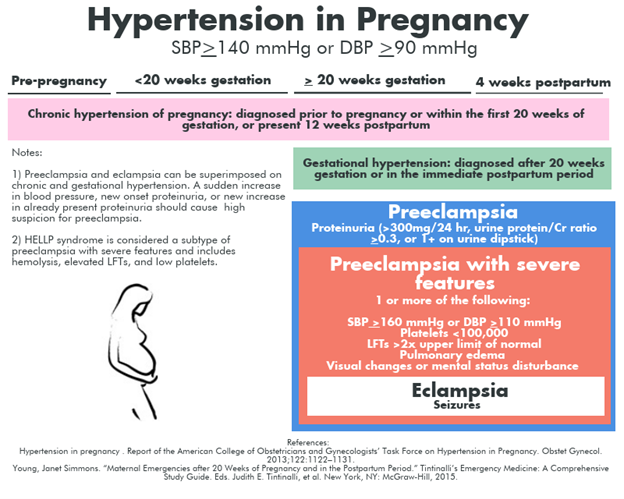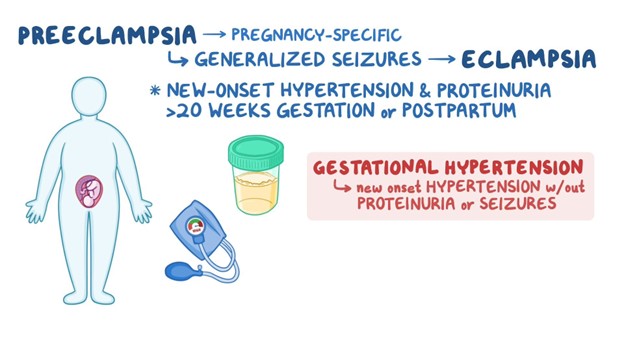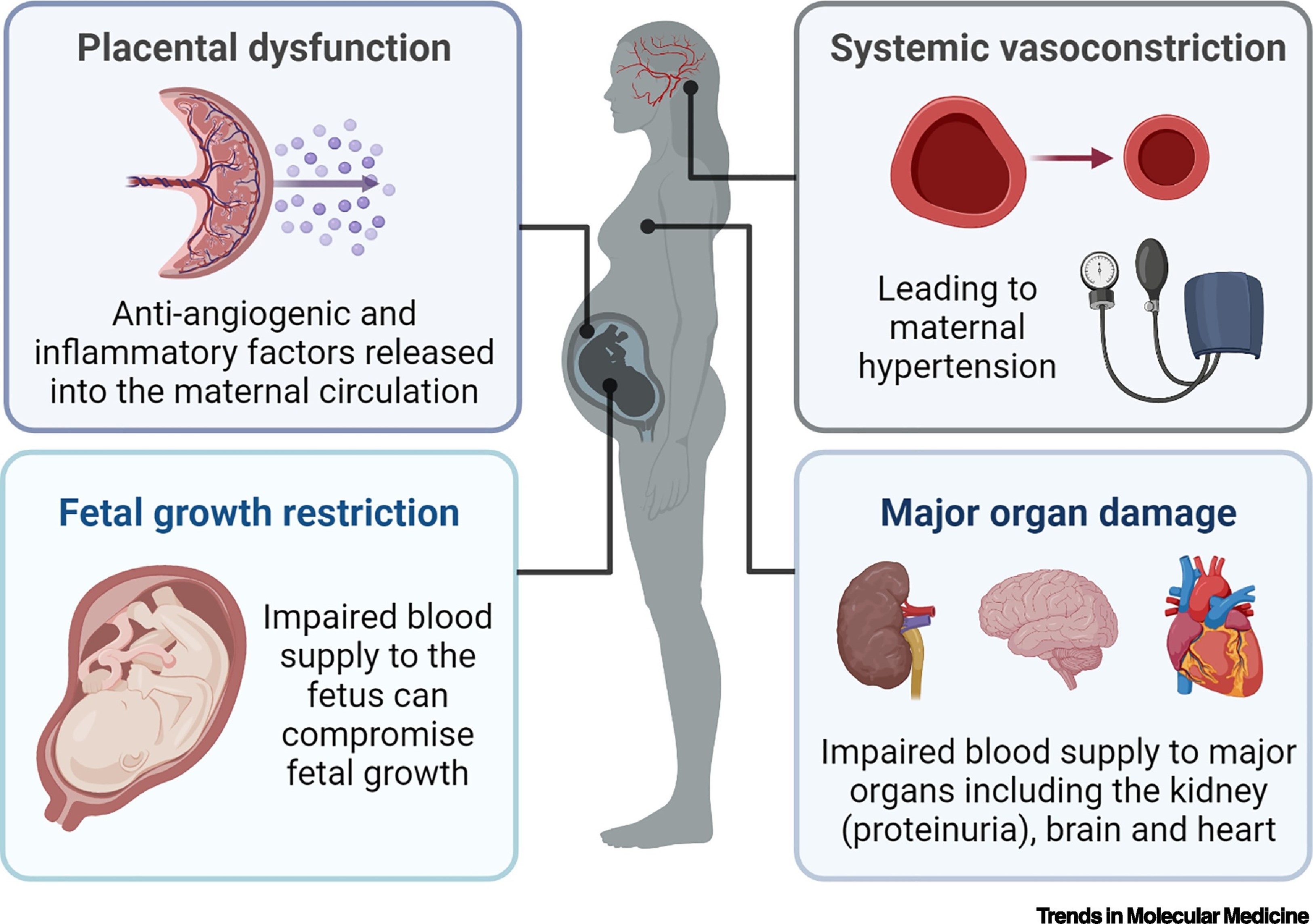Introduction
Pre-eclampsia is a pregnancy-specific condition characterized by new-onset hypertension and proteinuria after 20 weeks of gestation or during the postpartum period in a previously normotensive client. Hypertension is defined as a systolic blood pressure (SBP) of 140 mmHg or higher or a diastolic blood pressure (DBP) of 90 mmHg or higher on two occasions at least four hours apart. Proteinuria is defined as a urinary protein excretion of 300 mg or more in 24 hours or a urine protein-to-creatinine ratio of 0.3 or more. Pre-eclampsia can be classified as mild or severe based on the severity of hypertension, proteinuria, and other signs and symptoms.

Eclampsia is when a client with pre-eclampsia develops generalized seizures that are not attributable to other causes. Eclampsia can occur before, during, or after delivery.

Pre-eclampsia and eclampsia are serious complications of pregnancy that can affect both the mother and the baby. They are part of a spectrum of hypertensive disorders of pregnancy that also include gestational hypertension, chronic hypertension, and chronic hypertension with superimposed pre-eclampsia.
The exact cause of pre-eclampsia and eclampsia is unknown, but it is thought to involve abnormal placentation, endothelial dysfunction, inflammation, oxidative stress, and genetic factors. The placenta is a temporary organ that develops in the uterus during pregnancy, and connects the pregnant client with the fetus. It provides oxygen and nutrients to the fetus and removes waste products from the fetal blood. The placenta is attached to the uterine wall by spiral arteries that dilate during pregnancy to increase blood flow to the placenta. In pre-eclampsia, there is incomplete remodeling of the spiral arteries, resulting in reduced placental perfusion and hypoxia. This triggers the release of placental factors that cause widespread endothelial damage, vasoconstriction, increased vascular permeability, platelet aggregation, coagulation activation, and oxidative stress. These changes lead to multi-organ dysfunction and increased risk of maternal and fetal morbidity and mortality.
 Questions
Questions
Nursing Test Bank
Naxlex Comprehensive Predictor Exams
Questions on Introduction
Correct Answer is A
Explanation
Correct Answer is A
Explanation
Correct Answer is ["A","B"]
Explanation
Search Here
Related Topics
More on Nursing
Free Nursing Study Materials
Access to all study guides and practice questions for nursing for free.
- Free Nursing Study Trials
- Free Nursing Video tutorials
- Free Nursing Practice Tests
- Free Exam and Study Modes
- Free Nursing Revision Quizlets
